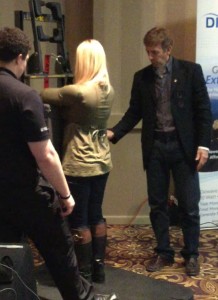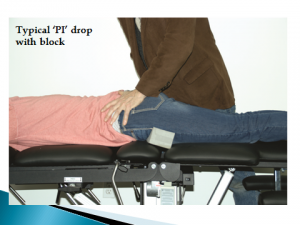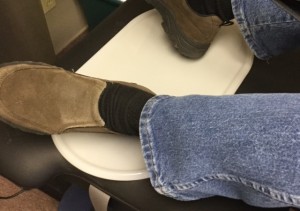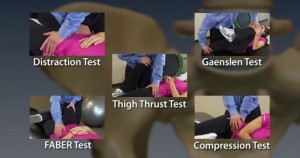Effect of traction on herniated disc material (CT evaluation)
Sari et al in Physiotherapy Theory Practice (2005) assessed (via CT-scan) 32 patients with HLD during and post-traction treatment and made detailed quantitative measures. The authors discuss that this was the first study to offer detailed analysis and quantitatively evaluate the effects on spinal structures. Their findings include a decrease in size of herniated disc material, widening of foramina, increased disc height and decreased psoas thickness. The spinal canal and foraminal increases were 22% & 27% respectively. The effects of traction were also assessed in different locations (median & posterolateral) as well as different spinal levels.
Ozturk et al in the journal Rheumatology Int (2005) also investigated traction in a randomized cohort of 46 patients 24 who received traction along with a standard PT regiment. Size of the herniation decreased only in the traction group and pain relief appeared concomitant. They noted patients with the largest herniations tended to respond better to traction. (A phenomena we have noted for years as well).
Kamanli et al in 2010 evaluated the addition of traction to a standard PT program and noted conventional PT with traction is effective in treatment of sub-acute LDH. Most interesting was the finding of a “significant decrease in hernia size in 5 patients but an increase in 3, however clinical improvement was equal in both groups. Their conclusion: “patients with Lumbar disc herniation should be monitored clinically” (as opposed to making direct clinical judgments based predominantly on MR findings).

 Many of those who attend our certification seminars are
Many of those who attend our certification seminars are 

 That most orthopedic tests haven’t been proven definitive in diagnosing some or most musculoskeletal conditions is a given. In fact even those tests with good inter-reliability suffer with short comings in validity. Laslett, Bogduk et al did a systematic review in 2010 to determine whether tests could accurately determine a disc vs. facet vs. an SI joint and found the answer to be “generally NO”. However most experts suggest a barrage of tests (with the majority negative (or positive)) give an acceptable odds-ratio as to the likelihood of involvement. This is more so the case with the SI joint vs. facet or disc.
That most orthopedic tests haven’t been proven definitive in diagnosing some or most musculoskeletal conditions is a given. In fact even those tests with good inter-reliability suffer with short comings in validity. Laslett, Bogduk et al did a systematic review in 2010 to determine whether tests could accurately determine a disc vs. facet vs. an SI joint and found the answer to be “generally NO”. However most experts suggest a barrage of tests (with the majority negative (or positive)) give an acceptable odds-ratio as to the likelihood of involvement. This is more so the case with the SI joint vs. facet or disc.